Skills used field research
user needs research
client interviews
UI design
prototype creation
|
Ampere Project (1998)
In grad school, one of my UI classes required us to build an interface using Tcl. Being interested in educational software development; I tracked down a physics professor that wanted a tool that would help college students learn Ampere's law, a concept that had proven very difficult for the students. We decided to build a prototype of this tool so that the professor could determine if he wanted to create a full featured tool.
Tcl is programming language focusing on UI development. It allows fairly complex interfaces to be developed quickly and easily, while still providing a full programming language underneath.
The reason that the professor wanted a tool to help teach the concept was due to the lack of information available to the students. For those unfamiliar with Ampere's law, this is the basic information that students were provided about it in their textbooks.
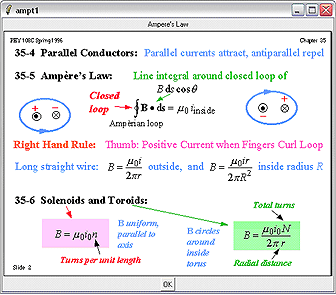 |
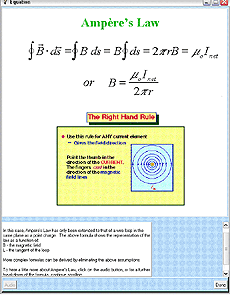 |
While these screens were included as part of the interface, our goal was to provide a number of different ways for students to be visualize the law and to interact with the software, allowing them to test certain questions/hypotheses that they may have. With this interaction, it was expected that the students would be able to develop a much more robust understanding.
The basic interface we developed consisted of a way for users to move a loop of wire across a magnetic field and watch as the field was integrated.
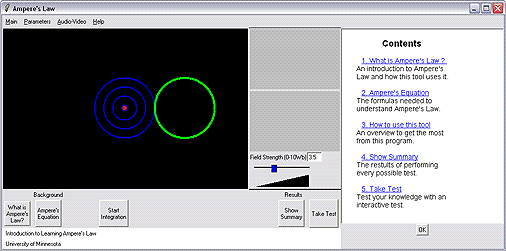
Another pieces that caused students confusion was seeing the actual field strength, especially how it changed over the entire loop. By combining these three displays together, it provided students a better understanding. |
|
While this provided a good view of Ampere's law, and more information than most textbooks provided. We wanted to provide some direction within the interface for ways it could expand in the future. We did this by providing placeholders for a number of additional options for the student to choose from, those the features were not implemented within this prototype.
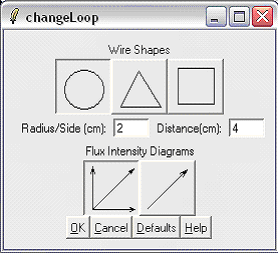 |
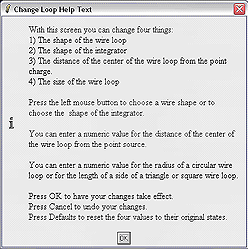 |
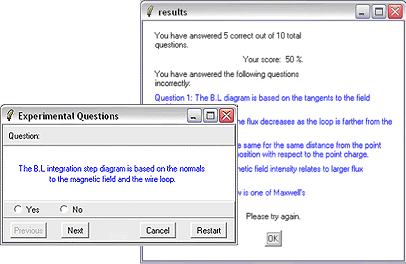 Of
course, the only way to know if a student has learned a subject is
to test them, so a simple set of testing features was also added.
Of
course, the only way to know if a student has learned a subject is
to test them, so a simple set of testing features was also added.
For those interested in utilizing or extending the tool, the tarred version is available. You will need some Tcl environment or wish4.2 or higher in order to view it.
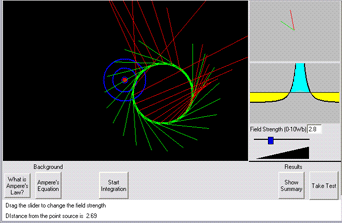 The
visualizations included allowed users to move through the calculation
process and interact with it. The primary visualization showed
the student a number integration points across the wire. From
there, we put those points into context. The context was included
to help make the mathematics involved more understandable.
The
visualizations included allowed users to move through the calculation
process and interact with it. The primary visualization showed
the student a number integration points across the wire. From
there, we put those points into context. The context was included
to help make the mathematics involved more understandable.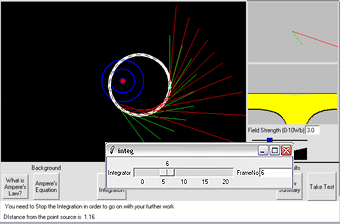 The
student was also free to modify a number of additional parameters.
They could step through the integration and see the parameters
at any point. The could also change the field strength or
the location of the loop and again step through the integration.
This level of interaction was meant to
add the ability for the student to ask 'what if,' something you
can't do with a textbook, and often can't even do with a professor.
The
student was also free to modify a number of additional parameters.
They could step through the integration and see the parameters
at any point. The could also change the field strength or
the location of the loop and again step through the integration.
This level of interaction was meant to
add the ability for the student to ask 'what if,' something you
can't do with a textbook, and often can't even do with a professor.